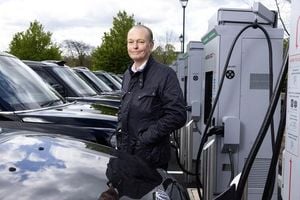On September 30, 2025, the Charlemagne building in Brussels buzzed with the energy of policymakers, industry leaders, innovators, and climate advocates, all converging for a pivotal event hosted by the European Commission’s Directorate-General for Climate Action (DG CLIMA). This high-level hybrid gathering, which was also livestreamed for a global audience, wasn’t just another climate conference—it was a moment to take stock of Europe’s climate journey, to reaffirm commitments, and to chart a course for the future amid mounting environmental and economic pressures.
The event, titled “Climate Action That Works for You: An Agenda for Competitiveness, Prosperity and Resilience,” came at a time of geopolitical uncertainty and after a year marked by extreme weather and shifting political sands. According to the European Commission, the aim was clear: “Reaffirm the EU’s course toward climate neutrality by 2050” and highlight “the economic and social benefits of climate action—not just for the planet, but for people, prosperity, and business.”
The day’s agenda was packed. It opened with a video message from Ursula von der Leyen, President of the European Commission, and welcome remarks from Kurt Vandenberghe, Director-General for Climate Action. François Gemenne, a professor and director at The Hugo Observatory, set the stage for a day of reflection and vision-casting, marking ten years since the Paris Agreement and six years into the European Green Deal. The message was unmistakable: Europe stands at a crossroads, and the choices made now will define its future.
One of the event’s early highlights was a roundtable discussion titled, “The net-zero economy is taking shape—are we ready?” Moderated by Yvon Slingenberg of the European Commission, the panel brought together voices from across the spectrum, including Danuše Nerudová (European Parliament), David Ducarme (Knauf Insulation), Luisa Orre (Stegra), and Erika Blanckaert (Invest Europe). The discussion was candid about the challenges but also optimistic about the opportunities. The science is clear, the impacts are here, but are we harnessing the full potential of the clean economy? That’s the million-euro question.
Throughout the day, real-world testimonials underscored that the transition to climate neutrality isn’t just a policy ambition—it’s happening on the ground. From city halls to startups, changemakers like Ricardo Rio, Mayor of Braga, Portugal, and European Climate Pact Ambassador, and Sofie Winge-Petersen of Paint 'R, shared stories of resilience and innovation. Their experiences made it clear that climate action, when rooted in local realities, can make communities and businesses stronger and more future-ready.
Parallel workshops dug deeper into the nuts and bolts of the transition. One session, “Accelerating the clean transition through innovation,” explored how breakthrough decarbonisation technologies could be deployed across industry and energy. Another, “EU’s climate diplomacy and international climate cooperation,” tackled the thorny issues of global collaboration and translating political ambition into concrete action. A third, “Climate policy in action—reporting on progress,” examined how robust information and indicators are essential for tracking the EU’s transition to a sustainable, competitive economy.
But the conversation wasn’t just about technology and targets. Financing the transition emerged as a central theme. A panel discussion featuring Frank Elderson (European Central Bank), Alison Martin (Zurich Insurance), Sebastian Buckup (World Economic Forum), and Paola Angeletti (Intesa Sanpaolo) delved into the financial sector’s role in accelerating climate action. As the panelists emphasized, mobilizing finance is essential—without it, the clean transition simply can’t happen at scale. Regulatory developments, the insurance dimension of climate adaptation, and unlocking private investment were all hot topics.
Later in the afternoon, the focus shifted to the human element. “Engaging communities in the clean transition: Local and regional ImPact stories” highlighted collective action and community engagement as essential ingredients for a just transition. Speakers like Joost Brinkman (Cycling4Climate) and Mariya Hristova (Agriventures) showed that beyond regulations and technology, it’s people who drive change.
The day culminated in a conversation between Financial Times correspondent Alice Hancock and Wopke Hoekstra, European Commissioner for Climate, Net Zero and Clean Growth. Hoekstra’s vision for the future of EU and global climate policy emphasized strategic direction and the importance of keeping climate action at the heart of Europe’s competitiveness and prosperity agenda.
Just a day later, on October 1, 2025, the European Environment Agency (EEA) released its most comprehensive ‘state of environment’ report to date. According to the EEA, the outlook for most environmental trends is “concerning and poses major risks to Europe’s economic prosperity, security and quality of life.” The report warns that climate change and environmental degradation threaten not just ecosystems, but the very foundation of Europe’s competitiveness, which depends on natural resources. Achieving climate neutrality by 2050, the EEA stresses, hinges on better management of land, water, and other resources—a message that echoed throughout the DG CLIMA event.
The EEA report notes that the EU is a world leader in climate efforts, having reduced greenhouse gas emissions and fossil fuel use while doubling the share of renewables since 2005. Progress in air quality, waste recycling, and resource efficiency gives cause for hope. However, the report also paints a sobering picture: biodiversity is declining, water stress affects one third of Europe’s population, and Europe is now the fastest-warming continent. The frequency and magnitude of climate-related disasters are rising, underscoring the urgent need for adaptation and resilience—without leaving anyone behind.
Within this context, the steel industry stands out as both a challenge and an opportunity. As Euractiv reported on October 1, the sector is one of the most CO2-intensive industries, but it also holds the promise for Europe to lead globally in low-emission steel production. The introduction of the Low Emission Steel Standard (LESS)—a labeling system for clean steel—could be a game-changer. According to Euractiv, LESS aims to “stimulate demand for low-emission steel by ensuring transparency, building consumer trust, and enabling procurement practices that reward climate-friendly solutions.”
Discussions at the event, and in the broader policy discourse, have focused on the need for robust labeling frameworks, certification, traceability, and alignment with international markets. By accelerating investments in breakthrough technologies and fostering innovation, Europe can turn the steel sector’s decarbonisation into a competitive advantage. As the EEA report notes, increasing circularity and investing in green innovation are key to reducing dependency on energy imports and critical raw materials.
Despite the progress and optimism, the challenges ahead are formidable. The EEA report urges stepping up the implementation of policies and longer-term sustainability-enabling actions agreed to under the European Green Deal. Protecting natural resources, mitigating climate change, and reducing pollution are not just environmental imperatives—they’re essential for food security, drinking water, and flood defenses. Only by restoring Europe’s natural environment and transforming production and consumption systems can the continent maintain a competitive economy and a high quality of life for its citizens.
As the Brussels event wrapped up with a networking cocktail, the sense was clear: Europe’s climate journey is far from over, but the path forward is becoming sharper. The conversations, commitments, and innovations showcased over these two days reflect a region determined to lead not just in setting ambitious climate targets, but in translating them into real-world action—one sector, one community, and one policy at a time.




